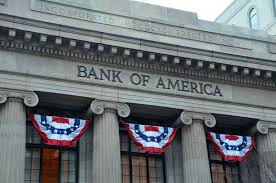 The public portions of the annual resolution plans or living wills of 17 large financial institutions were jointly released by the FDIC and the Federal Reserve Board today. The resolution plans describe in detail a financial institution’s plans for a rapid and orderly resolution under the U.S. Bankruptcy Code to address material financial distress or a potential collapse and failure.
The public portions of the annual resolution plans or living wills of 17 large financial institutions were jointly released by the FDIC and the Federal Reserve Board today. The resolution plans describe in detail a financial institution’s plans for a rapid and orderly resolution under the U.S. Bankruptcy Code to address material financial distress or a potential collapse and failure.
All bank holding companies with $50 billion or more in assets and nonbank financial companies deemed to be systemically important by the Financial Stability Oversight Council (FSOC) are required to file a resolution plan with regulators under provisions of the Dodd-Frank Wall Street Reform and Consumer Protection Act.
Thirteen financial institutions whose plans were released today and had previously filed resolution plans are Bank of America Corporation, Bank of New York Mellon Corporation, Barclays PLC, Citigroup Inc., Credit Suisse Group AG, Deutsche Bank AG, Goldman Sachs Group, HSBC Holdings plc, JPMorgan Chase & Co., Morgan Stanley, State Street Corporation, UBS AG, and Wells Fargo & Company.
The three large nonbank systemically important institutions filing resolution plans today for the first time are American International Group, Prudential Financial, Inc., and General Electric Capital Corporation.
Interestingly the French banking giant BNP Paribas which recently agreed to pay the U.S. a massive $8.9 billion fine for improper banking practices was granted a request for a time extension to file their resolution plan which is now due by October 1, 2014.
Last October the Bank of America, the second largest U.S. bank in terms of assets had been forced to submit a revised resolution plan when regulators weren’t convinced that their plan would work. Bank of America’s strategy for resolution included putting the parent holding company into bankruptcy and recapitalizing certain critical operating subsidiaries while the holding company was dismantled.
In today’s resolution filing Bank of America said that its primary liquidity objective is to have adequate funding throughout market cycles including periods of severe financial distress. Bank of America’s global excess liquidity totaled $406 billion according to its resolution plan and is comprised of cash on deposit at central banks and holdings of high-quality, liquid, and unencumbered U.S. government and agency securities.
Theoretically, the resolution plans sound great but would they really work in another financial crisis on the scale of an event equal to or greater than the financial meltdown of 2008? If an institution the size of Bank of America with over $2 trillion dollars in assets became so financially impaired that it was forced to implement its resolution plan it’s hard to believe that the contagion would not quickly spread to the entire financial system. Giant financial institutions have vast interlocking financial transactions (think derivatives) that would quickly make one institution’s failure a problem across the entire financial system.
In a Bloomberg interview Ernie Patrikis, a former general counsel of the New York Fed said “You cannot create a playbook that will be followed when the (one) company is in trouble. Life just doesn’t work like that.” Hopefully we will never reach the point where the resolution plans are tested in real life but it is highly unlikely (just as in 2008) that regulators would quickly recognize or solve a major financial crisis without massive government bailouts from the Federal Reserve. It’s also inconceivable to believe that the “too big to fail banks” which are now bigger than ever could quickly be wound down in a bankruptcy filing without major difficulties and unintended adverse consequences.
Click here to see the public portion of the resolution plans filed by 215 financial institutions released today by the Fed and the FDIC.
Speak Your Mind
You must be logged in to post a comment.